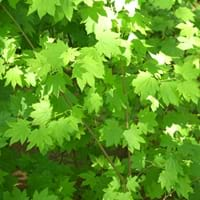Life Span
Biennial and Perennial
Perennial
Origin
Europe, Western Asia
North America, Northwestern United States
Types
Not Available
Not Available
Habitat
waste ground, wastelands
Forests, gardens, Open Forest, Tropical regions, Wet forest
USDA Hardiness Zone
4-9
5-9
Sunset Zone
A1, A2, A3, H1, H2, 1a, 1b, 2a, 2b, 3a, 3b, 4, 5, 6, 7, 8, 9, 10, 11, 12, 13, 14, 15, 16, 17, 18, 19, 20, 21, 22, 23, 24
A3, 2b, 3a, 3b, 4, 5, 6, 14, 15, 16, 17
Habit
Rosette/Stemless
Clump-Forming
Flower Color
Yellow
White, Purple
Flower Color Modifier
Bicolor
Bicolor
Fruit Color
Brown, Black
Red
Leaf Color in Spring
Green
Green, Light Green
Leaf Color in Summer
Green
Green, Light Green
Leaf Color in Fall
Green
Red, Orange, Dark Red, Orange Red
Leaf Color in Winter
Not Available
Not Available
Leaf Shape
Pinnate
Maple shaped
Plant Season
Summer
Spring, Summer, Fall, Winter
Sunlight
Full Sun
Full Sun, Partial Sun, Partial shade, Full Shade
Growth Rate
Medium
Medium
Type of Soil
Loam
Clay, Loam, Sand
The pH of Soil
Neutral
Acidic, Neutral, Alkaline
Soil Drainage
Well drained
Average
Bloom Time
Summer
Early Spring
Tolerances
Drought
Wet Site
Where to Plant?
Ground, Pot
Ground
How to Plant?
Seedlings
Stem Planting
Plant Maintenance
Medium
Medium
Watering Requirements
Average Water Needs, Do Not over Water, Keep the ground moist but not water-logged
Allow soil to be completely dry in between waterings, Requires consistently moist soil, Requires watering in the growing season, Water Deeply
In Summer
Lots of watering
Lots of watering
In Spring
Moderate
Moderate
In Winter
Average Water
Average Water
Soil pH
Neutral
Acidic, Neutral, Alkaline
Soil Type
Loam
Clay, Loam, Sand
Soil Drainage Capacity
Well drained
Average
Sun Exposure
Full Sun
Full Sun, Partial Sun, Partial shade, Full Shade
Pruning
Remove damaged leaves, Remove dead branches, Remove dead leaves
Pinch or prune as they grow to promote branching and bushiness, Prune every year, Prune for shortening long shoots, Prune if you want to improve plant shape, Remove deadheads
Fertilizers
All-Purpose Liquid Fertilizer
All-Purpose Liquid Fertilizer
Pests and Diseases
Aphids, Armyworm, Cutworms, Downy mildew, Pitch canker, Red blotch
Billbugs, Fungal Diseases, Red blotch
Plant Tolerance
Drought
Drought
Flower Petal Number
Not Available
Single
Fragrant Bark/Stem
Yes
No
Foliage Texture
Fine
Medium
Foliage Sheen
Matte
Matte
Attracts
Butterflies
Not Available
Allergy
Stomach burn
Not Available
Aesthetic Uses
Not Available
Showy Purposes
Beauty Benefits
Blood purifying, Good for skin
Not Available
Environmental Uses
Air purification
Air purification
Medicinal Uses
Aphrodisiac
Not Available
Part of Plant Used
Root
Not Available
Other Uses
Food for animals, Used as a nutritious food item
Not Available
Used As Indoor Plant
Yes
No
Used As Outdoor Plant
Yes
Yes
Garden Design
Edible, Herb, Vegetable
Feature Plant, Foundation, Mixed Border, Topiary / Bonsai / Espalier
Botanical Name
PASTINACA sativa
ACER circinatum
Common Name
Parsnip
Oregon Vine Maple, Vine Maple
In German
Pastinake
Wein-Ahorn
In French
Panais
Maple Vine
In Spanish
Chirivía
arce vid
In Greek
Είδος δαυκίου
αμπέλου Maple
In Portuguese
cherivia
bordo de videira
In Polish
Pasternak
Vine Maple
In Latin
parsnip
vitis Maple
Phylum
Magnoliophyta
Tracheophyta
Class
Magnoliopsida
Magnoliopsida
Family
Apiaceae
Aceraceae
Clade
Angiosperms, Asterids, Eudicots
Angiosperms, Eudicots, Rosids
Tribe
Not Available
Not Available
Subfamily
Not Available
Hippocastanoideae
Number of Species
Not Available
Not Available
Season and Care of Parsnip and Vine Maple
Season and care of Parsnip and Vine Maple is important to know. While considering everything about Parsnip and Vine Maple Care, growing season is an essential factor. Parsnip season is Summer and Vine Maple season is Summer. The type of soil for Parsnip is Loam and for Vine Maple is Clay, Loam, Sand while the PH of soil for Parsnip is Neutral and for Vine Maple is Acidic, Neutral, Alkaline.
Parsnip and Vine Maple Physical Information
Parsnip and Vine Maple physical information is very important for comparison. Parsnip height is 15.20 cm and width 7.60 cm whereas Vine Maple height is 610.00 cm and width 610.00 cm. The color specification of Parsnip and Vine Maple are as follows:
Parsnip flower color: Yellow
Parsnip leaf color: Green
Vine Maple flower color: White and Purple
- Vine Maple leaf color: Green and Light Green
Care of Parsnip and Vine Maple
Care of Parsnip and Vine Maple include pruning, fertilizers, watering etc. Parsnip pruning is done Remove damaged leaves, Remove dead branches and Remove dead leaves and Vine Maple pruning is done Pinch or prune as they grow to promote branching and bushiness, Prune every year, Prune for shortening long shoots, Prune if you want to improve plant shape and Remove deadheads. In summer Parsnip needs Lots of watering and in winter, it needs Average Water. Whereas, in summer Vine Maple needs Lots of watering and in winter, it needs Average Water.





